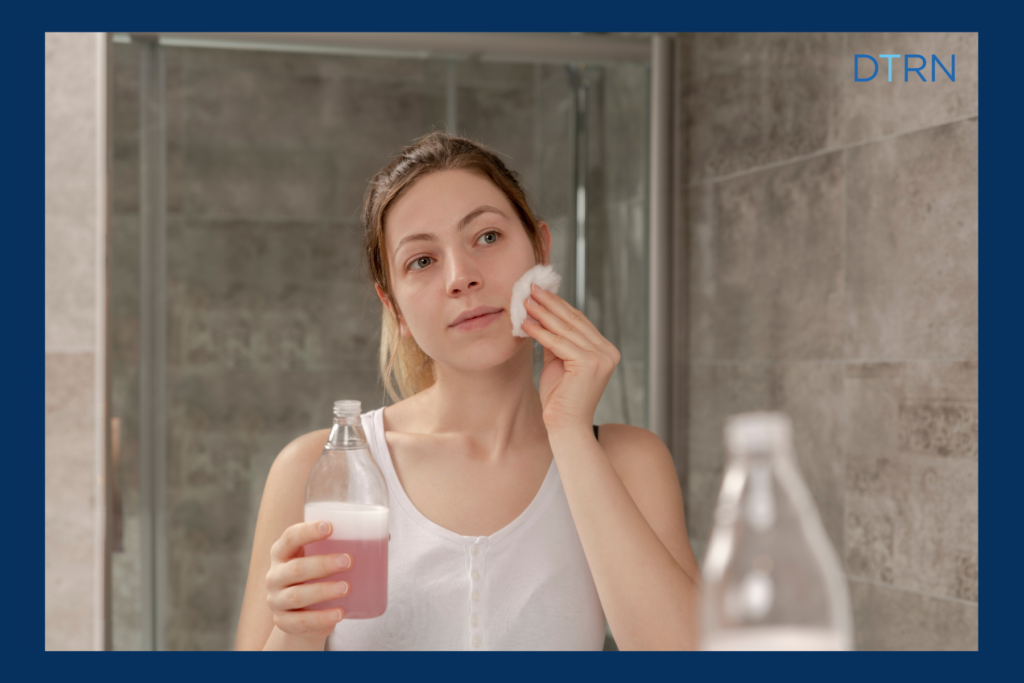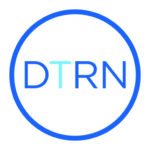Wondering what the best skin regimen in your 30s is?
Aging is a fact of life. The natural aging process typically begins in the late twenties to early 30s. Therefore, it’s no surprise that around thirty is the age when many begin considering anti-aging treatments and products. According to the American Academy of Facial Plastic and Reconstructive Surgery, Inc. (AAFPRS), millennials, which range between the ages of 26 and 41 as of 2022, saw a significant increase in cosmetic treatments and injectables between 2013 and 2018.
According to Candace Bersani, Houston-based Registered Nurse and Professional Injector, “Research shows that we start to lose collagen by age 30 at a rate of roughly 1% per year. By our 40s, that rate of loss has a steeper increase’” Beransi continues, “As we age, the rate of collagen breakdown starts to exceed production, thus contributing to visible signs of aging. Obviously, genetics and lifestyle play a very important role in that. As a result, the 30s are a crucial time in setting the groundwork for your anti-aging future.”
Skin Challenges for those in their 30s
As our production of collagen begins to decline in our 30s, it leads to thinner skin. In addition, there’s diminished functioning of our oil and sweat glands. Our skin becomes thinner and drier, respectively, as a result. Some of the signs of aging we begin to see and become more concerned about in our 30s include:
- Wrinkles
- Fine lines
- Hyperpigmentation
- Adult acne
- Rosacea
- Dulling skin
- Enlarged pores
Treatments to begin in your 30s
According to the professionals, there are many treatments that are beneficial to begin in your 30s or sooner, including:
- Neuromodulator treatments (e.g, Botox, Dysport, Xeomin, Daxxify, Juveau)
- Dermal fillers (e.g., Juvederm, Restylane, Radiesse, Sculptra)
- Collagen Enhancing treatments (e.g., Ultherapy, laser treatments)
- Hyperpigmentation treatments (e.g., laser therapy treatments)
Neuromodulator treatments (Botox, Dysport, Xeomin, Daxxify, Juveau)
Bersani states, “It’s so much easier and cost effective in the long run to prevent than it is to correct. My advice to younger patients is to start neurotoxin treatment at the first signs of static lines–for females this is usually when we start to see makeup settling into creases.”
Neurotoxin treatments on the market include Botox, Dysport, Xeomin, Jeuveau, and Daxxify. Botox is the number one minimally invasive cosmetic treatment on the market and has been approved for FDA cosmetic use since 2002. With Botox, specifically, results take 5 to 12 days to take effect and last for approximately 3 to 4 months, at which time additional injections are required to maintain results.
Dermal fillers
Dermal fillers are another option many turn to for the treatment of volume loss, to fill in fine lines and wrinkles, for facial balancing and contouring, and more. Fillers ‘fill’ in facial contours to add volume and fill in lines and wrinkles.
Different dermal fillers are made of different materials, including collagen, calcium, and hyaluronic acid (HA). Some of the most well-known dermal fillers, Juvederm and Restylane, are made of a safe hyaluronic acid gel. HA gels vary in thickness, with some being able to add sufficient volume and balancing to areas like the cheek and chin, while others are delicate enough to be used in the finer skin of the eye and lip areas. These types of fillers create a supportive structure underneath your facial skin to lift it up and attract water to it. The hyaluronic acid in HA fillers also offers a deep hydrating effect, boosting your skin’s radiance and firmness.
“Don’t be scared to do a conservative amount of dermal filler when you start to see volume loss, but stay conservative with it, especially in these preventative years,” Bersani suggests.
When you begin conservative, you can then choose to slowly and gradually build on the filler injected over time, for a more natural appearance. Also, it’s easier to add to filler vs. remove it once it’s injected. Though some fillers like HA fillers can be injected with an enzyme to dissolve them if you don’t like the results, others require you to wait it out until your body naturally absorbs the filler over time.
Additional products in the dermal filler family include Radiesse and Sculptra, which are referred to as biostimulators. Radiesse and Sculptra stimulate the production of collagen and elastin once injected and over time.
“I love Biostimulators such as Radiesse and Sculptra. While they don’t necessarily provide immediate correction the way HA dermal fillers do, they offer the benefit of collagen and elastin stimulation.”
A combination of neuromodulators and fillers can help restore facial volume while minimizing the appearance and creation of fine lines and wrinkles in your 30s.
Collagen stimulation
According to Bersani, “Beyond injectables, everyone in their 30s should consider doing some type of skin treatment to boost collagen. My favorites are the CoolPeel and Halo treatments.”
There are a myriad of collagen stimulating treatments on the market, from laser treatments like BBL and Halo to Ultherapy and Radiofrequency Microneedling. Each works differently in how they stimulate collagen production. Here’s a breakdown of some of the most effective.
CoolPeel
CoolPeel uses intense infrared light that’s delivered to the outer layers of your skin to treat the face, neck and chest. It both prevents and corrects skin issues. The treatment targets signs of premature aging, fine lines and wrinkles, and skin growths that are benign, like skin tags and moles. Conditions like enlarged pores, rosacea, acne scarring, and other scars can be greatly improved with CoolPeel.
Halo Laser Therapy
The Halo delivers ablative and non-ablative wavelengths to offer several benefits. Aside from the healthy glow, you’ll also benefit from a reduction in hyperpigmentation, smaller pore sizes, and improvement in the appearance of tone, texture, fine lines, and wrinkles. Results can be seen within a week and improve over time.
BBL (Broadband Light)
Broadband Light (BBL) uses light therapy to treat a number of skin concerns, including blemishes, enlarged pores, uneven skin pigmentation, broken capillaries, facial redness, and sun-induced freckles. Results can be seen within a week and improve over time.
Ultherapy
Ultherapy uses ultrasound therapy to stimulate collagen production. This noninvasive treatment can be used to lift the chin, brow, and neck and to improve wrinkles and lines on the chest area. Maximum results take 3 to 4 months to see.
Radiofrequency Microneedling
The use of radiofrequency microneedling supports the stimulation of collagen production in the body. The result is minimized pore size, improved skin tone and texture, reduction in the appearance of fine lines and wrinkles, and more tightened skin. Some improvement can be seen immediately and improve over time.

Taking care of your skin at home
“As far as at home skincare, keeping it simple and consistent is best. A good cleanser, like the SkinMedica AHA/BHA cleanser, is great for gentle exfoliation. And I will never be without my SkinMedica TNS Advanced+ growth factors.”
SkinMedica is a medical grade skincare line that offers proven results. SkinMedica’s TNS Advanced+ Serum, as Bersani mentions, is a next-generation skincare product with growth factors to reduce the signs of aging. They have several other products with proven results backed by science and research, including their HA5 Rejuvenating Hydrator, and Lumivive System.
If medical grade skincare isn’t in your budget, you can still find products that are good for your skin that offer some proven results. Do your research and seek out high quality products with ingredients like hyaluronic acid, retinol (evening care only), ceramides, antioxidants (think Vitamin E, Vitamin C, and furoic acid), and AHA/BHA that help exfoliate the skin.
And, of course, don’t forget to protect your skin against the sun’s exposure each day, urges Bursani. “Last but not least, sunscreen, sunscreen, sunscreen. While medical grade is best for skincare, it’s not always realistic for everyone. I would rather see someone be consistent in their skincare routine and wear sunscreen every single day. Sunscreen is a must, regardless of time spent outdoors. And don’t forget to treat and protect your neck, décolleté, and hands.”
Best skin regimen in your 30s
With your research-backed skin care products in hand and any additional ones you might need to add, here are some key steps to ensure you’re taking care of your skin properly morning and night.
Pro Tip: The following steps are the bar essentials. You might choose to also add treatments that target specific concerns, like a skin brightening treatment, eye treatment for dark circles, and prescription retinol for acne, fine lines, wrinkles, and hyperpigmentation.
Morning Routine for Your 30s
Cleanse: Cleanse your skin with a light cleanser for your skin type. Look for ingredients like niacinamide, hyaluronic acid, and ceramides to protect and soften your skin. Your cleanser is too harsh for your skin if your skin reddens or feels dry and tight after your wash your face.
Speciality face serum application: Use a speciality serum that hydrates your skin and protects it from free radicals. Look for ingredients like hyaluronic acid and antioxidants.
Moisturize: Use a light moisturizer or day cream to lock in moisture throughout the day. Apply your moisturizer after your face serum and before your sunscreen.
Apply SPF: As Bersani shares, your skincare routine in your 30s, as well as in your 20s and beyond your 30s, should always include an SPF. Look for broad-spectrum sunscreen with an SPF of 35 or higher to protect against sun damage.
Treat the lips: A moisturizing lip treatment or balm will help to keep your lips soft and supple. Lip treatments are especially important during the dryer winter months.
Evening Routine for Your 30s
Remove Makeup: It’s essential to remove your makeup before you go to bed. If you don’t remove your makeup, you’ll prevent your skin’s natural renewal process from happening and could also clog your pores and further irritate your skin. An oil based cleanser works well to remove your makeup while also protecting your skin’s natural microbiome.
Cleanse: Use a gentle cleanser to remove any remaining makeup and impurities from the skin.
Exfoliate: Exfoliation helps to further clear your pores and help with cell turnover. However, choose a mild exfoliator without harsh irritants or granules that could irritate the skin.
Apply face serum: Similar to the morning, you’ll want to use a face serum at night to protect and hydrate the skin. Serums with antioxidants can also help to fight against free radicals.
Moisturize: Apply a nighttime moisturizer or cream to further support your skin’s regeneration and repairing process while you get your beauty sleep.
Apply eye cream: Eye creams have similar ingredients as other moisturizers do, but are gentle enough for the delicate skin around the eyes. They help to prevent and reduce the appearance of fine lines and wrinkles.
What to Avoid in Your Skincare Routine After 30
Now that you know what to do for your skin in your 30s, here are a few things to avoid:
- Avoid wearing makeup while working out. Makeup free skin is best when working out. Wearing makeup while working out can lead to breakouts, skin infections, skin congestion, dull skin, and post-inflammatory hyperpigmentation (PIH).
- Don’t go to bed with your makeup on. Going to bed with your makeup on can lead to breakouts, skin irritation, skin congestion, and more.
- Avoid harsh ingredients and over exfoliating your skin.
As you employ the tips here in your 30s, it will be easier to maintain a healthy appearance with each new decade you reach. Your skin’s worth it!
Candace Bersani, RN
Candace Bersani is a Registered Nurse with her Bachelor of Science in Nursing from the University of Texas Health Science Center at Houston. Prior to joining the DermaTouch RN team, she worked at one of the nation’s top hospitals as an operating room nurse where she specialized in plastic and reconstructive surgery. She had the opportunity to observe facial anatomy up close, working alongside a top surgeon, and served as a patient care advocate during surgery.
Bersani has always had a passion for aesthetics and skincare. She is committed to providing innovative aesthetic treatments to achieve a natural result centered around the patient’s aesthetic goals. Learn more about Candace and the team of professionals she works with.
DermaTouch RN offers minimally invasive and non-invasive treatments for men and women in Houston, San Antonio, Spring and Cypress, as well as the surrounding areas of Texas. We are the largest aesthetic practice in the Houston area, and all of our medical spa treatments are performed by a team of nurse practitioners, registered nurses, and aestheticians who receive continuing education to remain abreast of emerging treatments that benefit our patients. We invite you to learn more about our office before your consultation.





